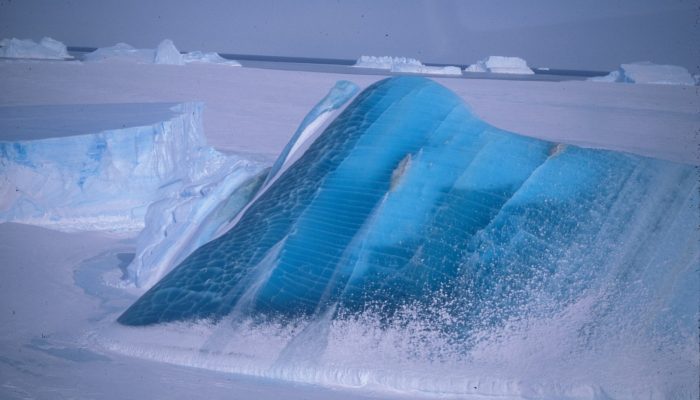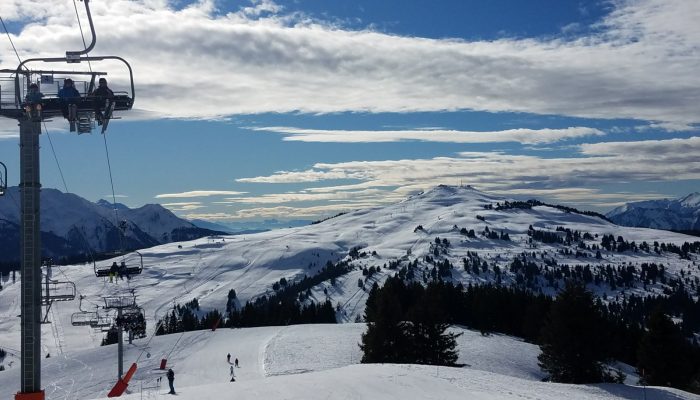In Svalbard, the snow melts to reveal a mysterious honeycomb network of irregular shapes (fig. 1). These shapes may look as though they have been created by a rogue baker with an unusual set of biscuit cutters, but they are in fact distinctive permafrost landforms known as ice-wedge polygons, and they play an important role in the global climate. Ice-wedge polygons: Nature’s biscuit-cutter In wint ...[Read More]
Image of the Week – Cure from the Cold?
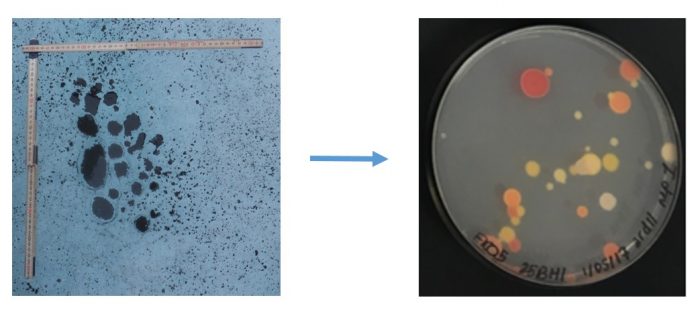
Humans rely on antibiotics for survival, but over time they are becoming less effective. So-called ‘superbugs’ are developing resistance to our most important drugs. The key to this global issue may be found in the cryosphere, where extreme microbiologists are hunting for new compounds in the cold that could help us win the war against antimicrobial resistance. Discovering drugs in Earth’s coldest ...[Read More]
Image of the week — Making pancakes
It’s pitch black and twenty degrees below zero; so cold that the hairs in your nose freeze. The Arctic Ocean in autumn and winter is inhospitable for both humans and most scientific equipment. This means there are very few close-up observations of sea ice made during these times. Recently, rapidly declining coverage of sea ice in the Arctic Ocean due to warming climate and the impending likelihood ...[Read More]
Image of the Week – Super-cool colours of icebergs
It is Easter weekend! And as we do not want you to forget about our beloved cryosphere, we provide you with a picture nearly as colourful as the Easter eggs: very blue icebergs! What makes them so special? This is what this Image of the Week is about… What are icebergs made of? Icebergs are chunks of ice which break off from land ice, such as glaciers or ice sheets (as you’ll know if you rem ...[Read More]
Image of the Week – Broccoli on Kilimanjaro!
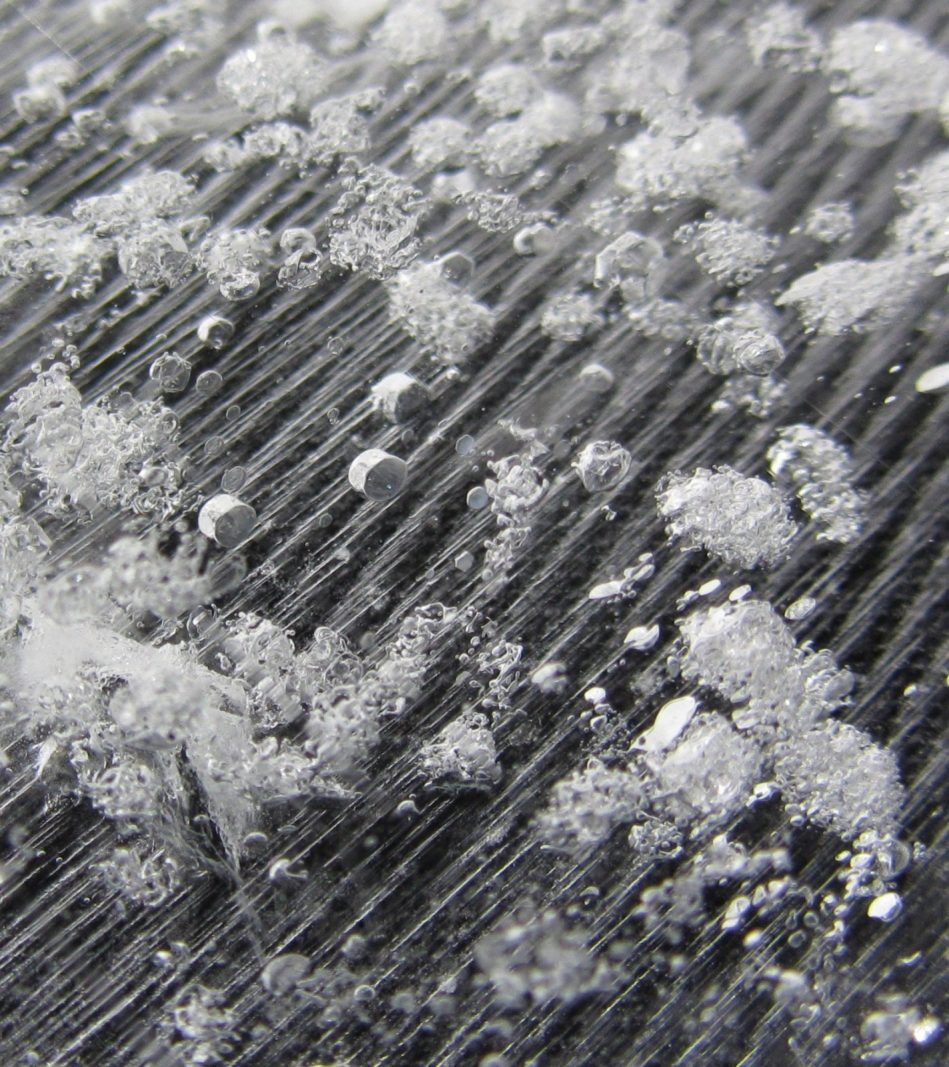
On the plateau of Kilimanjaro, Tanzania, the remnants of a glacier can be found and the ice from that glacier contains a rather interesting feature – Broccoli! Not the vegetable, but bubbles that look a lot like it. Our Image of the Week shows some of these strange “Broccoli Bubbles”. Read on to find out more about where these were found and how we can see them. There is not much ice left on the m ...[Read More]
Image of the Week – The colors of sea ice
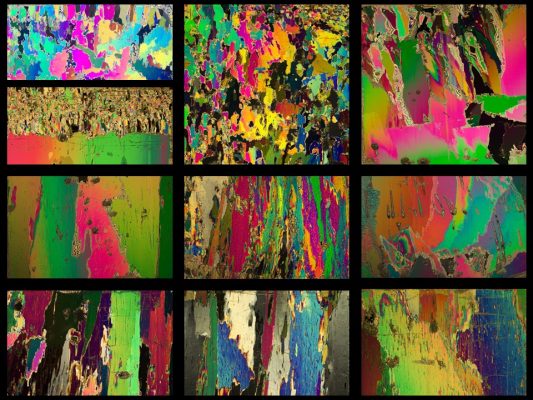
The Oscars 2018 might be over, but we have something for you that is just as cool or even cooler (often cooler than -20°C)! Our Image of the Week shows thin sections of sea ice photographed under polarized light, highlighting individual ice crystals in different colors, and is taken from a short video that we made. Read more about what this picture shows and watch the movie about how we got these ...[Read More]
Image of the Week – The world in a grain of cryoconite
Microbes growing on glaciers are recognized for their importance in accelerating glacier melting by darkening their surface and for maintaining biogeochemical cycles in Earth’s largest freshwater ecosystem. However, the microbial biodiversity of glaciers remains mysterious. Today, new DNA sequencing techniques are helping to reveal glaciers as icy hotspots of biodiversity. To see a world in a grai ...[Read More]
Image of the week – Skiing, a myth for our grandchildren?
Ski or water ski? Carnival season is typically when many drive straight to the mountains to indulge in their favorite winter sport. However, by the end of the century, models seem to predict a very different future for Carnival, with a drastic reduction in the number of snow days we get per year. This could render winter skiing something of the past, a bedtime story we tell our grandchildren at ni ...[Read More]
Image of the Week – The Gap, the Bridge, and the Game-changer
The Gap, the Bridge, and the Game-changer are three series of satellites. They carry instruments that measure the microwave radiation emitted by the Earth (called passive microwave instruments), while flying 800 km above our heads at 7,5 km/s. Since the late 1970s, most sea ice properties (concentration, extent, area, velocity, age and more!) have been measured with such passive microwave instrume ...[Read More]
Image of the Week – Microbes have a crush on glacier erosion
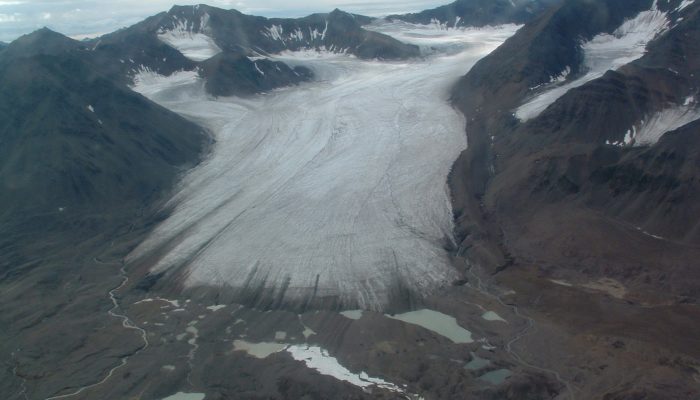
Glacier erosion happens at the interface between ice and the ground beneath. Rocks are ground down to dust and landscapes shaped by the flowing ice. While these might be hotspots for erosion, the dark and nutrient-poor sites are unlikely environments for biological activity. However, experiments suggest there may be novel sources of energy powering subglacial microbial life… Where there is water, ...[Read More]

